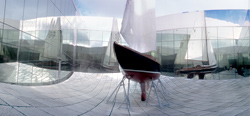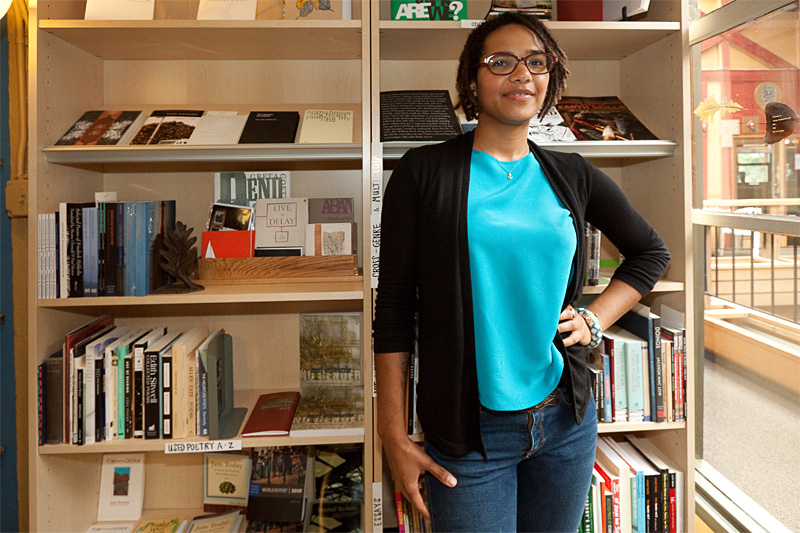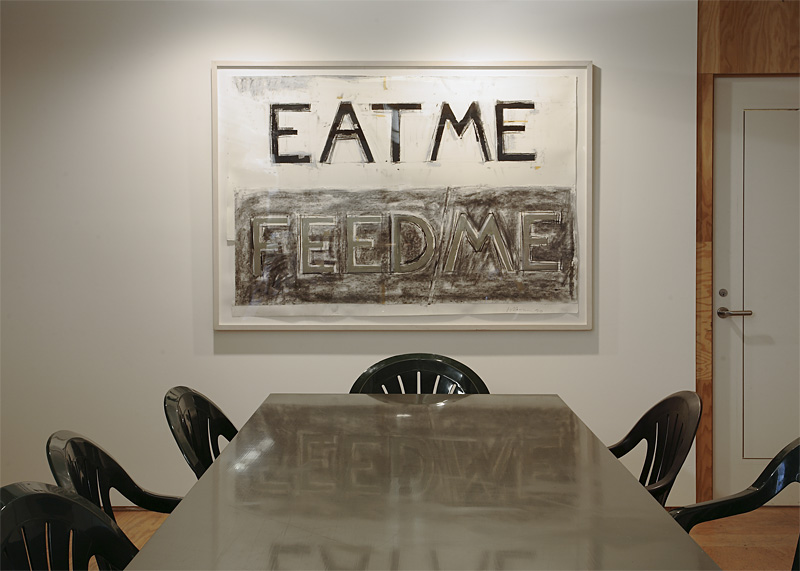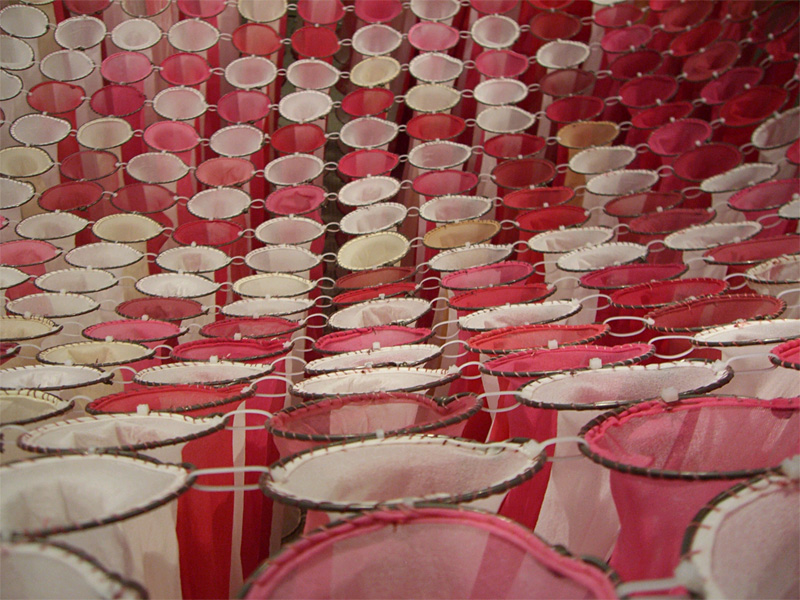There may not be much cohesion among the pieces selected for the Tacoma Art Museum’s 8th Annual Northwest Biennial, but there are a few standout works that make the exhibit worth a visit. The exhibition’s introductory text, from curators Rock Hushka of TAM and David Kiehl of the Whitney, says the show’s theme is “beauty,” which is certainly broad enough, with works organized around the only slightly less inclusive categories of abstraction, landscape, humor, and figuration. But no matter. This show offers a chance to see some great individual pieces by some of Seattle’s most interesting artists.
The most striking piece is Ship in a Bottle by SuttonBeresCuller. With the help of a crane, the trio placed a 26-foot 1956 Blanchard Senior Knockabout sailboat inside the museum’s interior courtyard, set upon the stone surface of Richard Rhodes’ ground-level sculpture, which slopes up toward the windows like the swell of waves. There’s no literal bottle; it is represented by the reflective windows enclosing the courtyard, which contain and multiply the boat. Ship seems to be less about the landlocked vessel itself and more about its repeated images. Approaching this piece from just the right perspective, you’ll be able to see the sailboat from every angle. With the sails luffing in the breeze, a blue sky makes the windows sparkle like water, and this charming little sloop, in its repeated reflections, indeed becomes a thing of beauty.
Once inside the museum’s gallery space, a paper sculpture by Claire Cowie. Her compelling and playful work is often populated with landscapes and animals; here, her Meerkatscape, standing more than 6 feet tall, is an imposing animal that is itself populated with landscapes. The gesso-white meerkat wears a watercolor collection of houses like tattoos on its back, while a small development of homes have grown atop its paper feet. The overgrown meerkat (which in reality is a small African mammal related to the mongoose) wears a kindly expression, though the piece seems to comment on the out-of-scale human encroachment into animal territory. Perhaps this is an imagined hero, a giant meerkat ready to stomp houses.
Another work that explores landscapein an oblique way is the video series by Ellensburg artist (and member of the still-new Punch Gallery) Justin Colt Beckman. Beckman fills each video screen like a canvas, using a variety of materials, from snow to wood to beer cans to lime green paintball splatters. In Degrees of Separation, six monitors display six videos in which we see the screen being slowly filled (or emptied). At the end, each square is still with finger-marked snow or the wood slats of a newly constructed wall or a field of wildflowers exposed after rows of Busch beer cans have been shot out of view. Each high-speed video records the hard labor (and time) it takes to fill each visual field. You watch Beckman build a wall, hammering nail by nail, then propping the completed structure on its side to fill the screen. Another monitor depicts Beckman constructing a wall of snow, brick by white brick, until the he builds himself out of the picture and all you see of him are his gloved hands smoothing snow into place. Some videos move backward: Green paint splatters fly off the glass to reveal Beckman aiming the paint gun, masked, accompanied by his pooch. With all six videos going at once, backward and forward, it’s not clear at first what’s happening. You have to sit still for this work, you have to be patient to get where it’s going. Beckman’s videos are landscapes in motion. The setting seems to be the basis of the work, and what gets obscured.
Many of the strongest pieces seek to blur categories. Almanac: Glacier Park, by Marie Watt, is a sculpture of stacked blankets, some of them wool, some bronze, sitting atop red cedar. The cast linens are made important, solid, historical, reminding me of smallpox blankets or potlatch offerings. In a drawing by Keith Tilford, seeming scribbles come together to create a loose-lined crowd of faces: figuration, via a squiggly line drawing. Susan Dory’s carefully rendered painting, Chamber (shown on our cover), depicts a pattern of colored ovals, evoking the way cells press against each other, creating order out of a loose mass. Anya Kivarkis’ brooches—miniature chandeliers dipped in white auto paint or delicate silver fancies—seem to both be precious and mock their own preciousness.
Another sculpture that seems to explore its own seriousness is Claude Zervas’ Elba. The cold cathode lamp sculpture exposes all its wires, which hang as a sort of curtain framing six small tubes of florescent lights, two parallel rows of three lights each. The label explains that this minimalist piece is a meditation on Napoleon’s loss of power, named for his place of exile, and constructed with the architectural strictness employed at Les Invalides, his final resting place. This explanation may seem a bit overblown, yet this quiet sculpture with its grand story, three of its bulbs fading, is rather compelling.
It’s not clear what these pieces, or for that matter, what most of the works on view here, have to say about the Northwest in general—perhaps all that holds this show together is the fact that the artists reside here, and the range of work issimply a testament to the diversity of art being made locally right now. With more than half of the 41 artists from Seattle, this biennial—chosen from artist submissions to a call for work, not an open selection by the curators—is simply not representative of the Northwest as a whole. That said, in the next Biennial, I would like to see more work by each artist—with the exhibit spreading into more than one gallery space at the museum, allowing the audience to engage in more of a dialogue with each artist.








